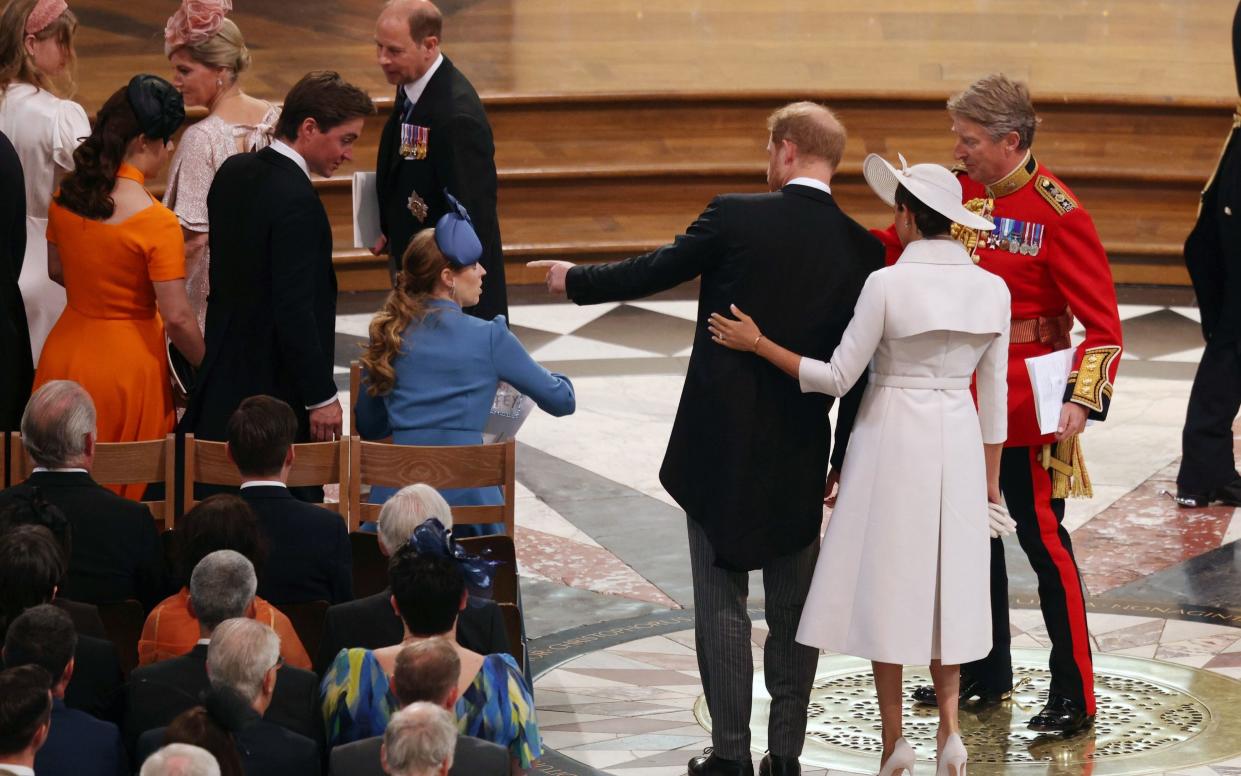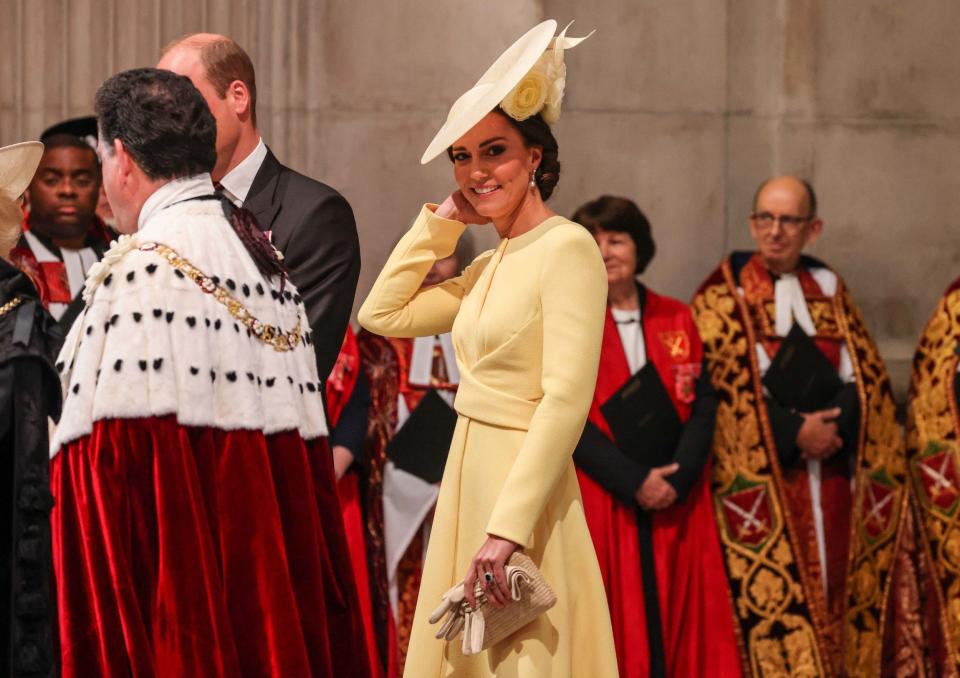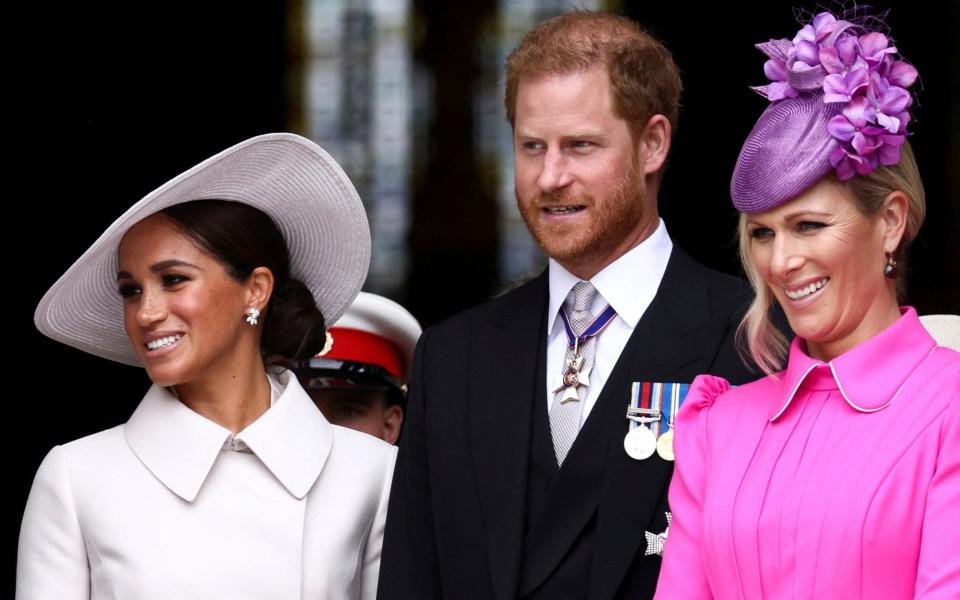Prince Harry and Meghan are now very much second row royals

Anyone expecting cries of “shame!” as they took their eagerly-anticipated walk up the steps of St Paul’s Cathedral would have been left disappointed.
This was Game of Thrones all right, but as the Duke and Duchess of Sussex attended their first official engagement since March 2020, there was none of the Netflix-esque drama we have grown used to in recent months.
Whether there were some boos among the cheers, it was hard to tell - the rather confused reaction to the first proper sighting of the exiled royals emblematic of Britain’s mixed feelings towards the sixth-in-line to the throne and his American wife.
The last time they attended a thanksgiving service, to mark Commonwealth Day two years ago, the tension could be cut with a ceremonial sword.
The Duke and Duchess of Cambridge even had to pull out of the royal procession at the last minute, allegedly following complaints from the California-bound couple that they had been completely erased from the order of service.
Several media deals and an Oprah Winfrey interview later, there appear to be a multi-million reasons why the Duke and Duchess are now more willing to take a back seat. Or, to be more accurate, a second row seat. Nestled in the pews with their fellow non-working royals, Princesses Beatrice and Eugenie and their husbands, Edo and Jack, their demotion down the pecking order was plain for all to see.
Indeed, before they had even arrived for the 11.30am ceremony, there was even talk that they may be made to suffer the ignominy of arriving in a minibus with the lesser Windsors and Kents.
Instead, it was a Land Rover which convened them to the Sir Christopher Wren-designed cathedral, where the Prince of Wales married Lady Diana Spencer at a similar time of year in 1981.
However, that was not before the likes of Mike and Zara Tindall and her brother, Peter Phillips, had taken their places directly behind the primo position where the Prince of Wales, the Duchess of Cornwall, and the Duke and Duchess of Cambridge would be sitting.
Amid much talk of continued frosty relations between the couples, seating the Sussexes on the other side of the aisle to the Cambridges meant there could be no visible communication between them at all. Nothing happens by chance when it comes to the organisation of major royal events. While she may have had to resort to watching the proceedings on television, there is no doubt the Queen cast her gimlet eye over the carefully constructed seating plan - concluding, quite rightly, that only working royals should be given front row seats.
The timings, informed by royal protocol, meant that William, Kate, Charles and Camilla were the last to arrive and the first to leave for the reception at The Guildhall afterwards, which the Sussexes swerved completely.
With Archie, three, and Lilibet, who turns one on Saturday, left behind at Frogmore Cottage, they could have easily cited childcare reasons for their swift return to Windsor, rather than an unwillingness to go over who made whom cry at Princess Charlotte’s bridesmaids dress fitting.
The jury is still out on whether Lilibet has already been introduced to her great-grandmother and namesake, or whether that private moment is still to come. There were also unconfirmed reports they visited Charles and Camilla at Clarence House before the service.
While William's relationship with Harry may still need some thawing, the warm bond between the new “fab four” was plain to see before the most senior quartet embarked on the royal procession, with Charles blowing a kiss at Kate, the daughter he never had.
Appropriately dressed in a “mellow” yellow ensemble by Emilia Wickstead, one of her favourite designers, the Duchess brought some welcome sunshine to what was a rather melancholy walk down the 150m long aisle.

Both the Duke of Cambridge, 39, and his Eeyore-ish father, 73, appeared visibly pained to be there without Her Majesty, conscious perhaps of the weight of future expectation resting heavily on their shoulders.
They could learn a trick or two from Meghan, whose resting face has been honed by years of Hollywood auditions. If the 40-year-old former actress was nervous seeing her in-laws again after accusing them of racism and nearly driving her to suicide, then she certainly was not showing it.
Even as the choir piped up in theatrical song, it was a case of “Megxit”, The Musical … the show must go on. Clearly distracted by her surroundings, at one point she turned to her husband and said: “I’ve never been here before, it’s beautiful.”
A rumour that one crowd member had shouted at the pair “I don't know how you’ve got the nerve to show up” remained unconfirmed, as the royals finally rose from their hard wooden chairs to make for the exits.
Having acted as the go-between between the brothers at the Duke of Edinburgh’s funeral, Mr Phillips, the Queen’s oldest grandchild, was once again on hand to ensure the Sussexes made a smooth exit.

As they emerged from the Great West Door to greet the crowds again, Mrs Tindall appeared to signal that they should go ahead, conscious perhaps of her cousin’s superior status in the line of succession - despite their newfound equal footing in the non-working royal stakes.
Yet it was Harry and Meghan's absence at the Guildhall that seemed to sum up what has become a royal game of two halves. The have duties and the have nots, the carriage riders and the royal outsiders, the future and the past.

